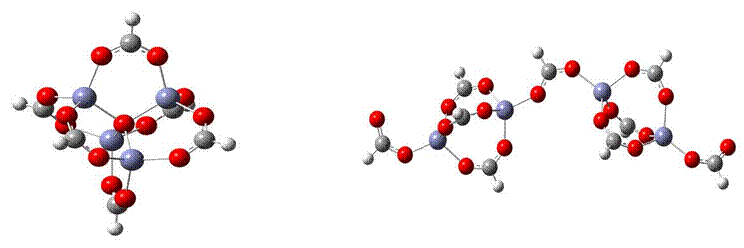Sunday, April 23rd, 2017
How Structures Of Materials Determine Their Properties

By Rob Hart, Ph.D., Head Of R&D
The first course I took in solid state was given by Professor Art Ellis. In addition to being incredibly smart and a passionate teacher, Art was magnificent at simplifying the esoteric concepts of the solid state: Brillouin zones, the reciprocal lattice, symmetry operations, band structure and momentum vectors (to name a few). He taught them in a way that brought the equations off the page into ideas that could be visualized and thought about in a way that made sense to me. He was introducing the idea that dopants introduce band states into semiconductors. The presence of tiny amounts of, for instance, boron in a silicon semiconductor shifts the behavior of the material so much that “band bending” occurs. This is important, because without it, solid state transistors would not be possible. Transistors being, of course, the foundational technology of cell phones, GPS receivers, laptops and so many other conveniences we take for granted now. A band state is nothing more or less than a structural and electronic defect in the semiconductor, which even at the parts per billion level makes all the difference in the world. Without these interesting variations in structure and properties, materials, just like people, would be boring!

Just like in the solid state, the microscopic arrangement of atoms and molecules is the determining factor in how materials behave and perform in chemical applications. The successful solution of molecular structure has led to understanding of phenomena as diverse as evolution (DNA) and modern construction (steel). Indeed, from the molecular structure, many physical properties can be understood or even predicted. This is true because all physical observables (like molecular spectra and density) are mathematically deterministic from the wavefunction of the system. The structure, specifically, the electronic structure, can be differentiated to calculate any physical property of a molecule. So while I admit my bias as an old structural chemist at heart, it’s fair to say that if you know the molecular structure, there’s not much more to know. And the corollary is true, too: if you don’t know the molecular structure, you don’t know much at all!

So what? So who cares if you can calculate the infrared spectrum of some arbitrary molecule? Since when could a spectrum buy me a beer or get my kid some new shoes? More than spectra or excitation energies, other, more practical properties of materials “fall in your lap” when you understand their structures. In three specific cases, we faced problems of viscosity, lubricity, and catalytic activity for products we have developed here at Shepherd Chemical. By understanding the molecular structures involved, we solved important and interesting problems by rationally improving the material properties of the products for the benefit of our customers.
In the case of zinc 2-ethylhexanoate, determining the molecular structures allowed us to optimize both the metal content and the viscosity, maximizing the value for the customer. For bismuth carboxylate additives in lubricant applications, determining thestructure and mechanism of the active lubricating material lead to rational improvement of the customers’ formulations. We worked with a customer to invent a new metal carboxylate molecule for ethylene oligomerization. Determining its structure for the first time let us understand together how to improve the system.
What is your business? What do you need molecules to do for you? Shepherd’s business is optimizing the value of your product by understanding it at the most fundamental level possible and building in exactly what you need to achieve your process goals at the molecular level. We are experts at designing, scaling-up and commercializing functional materials so that you can focus on your business. Right technology, right delivery, right partner. Contact us today with your molecular or functional target and see how the power of rational property optimization can make imperfections interesting!